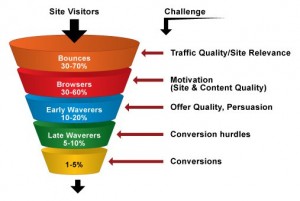Uncover a balanced approach to linear and streaming TV in modern marketing campaigns.

The television landscape has undergone a seismic shift in recent years, reshaped by the relentless march of digital technology. As we navigate this digital age, it’s crucial for marketers to understand the challenges and opportunities that lie ahead.
When discussing “TV in the digital age” in 2024, certain expectations come with it. Many expect me to champion streaming and connected TV (CTV) and declare traditional TV dead, with savvy marketers having moved on without a backward glance.
But it’s not that simple. My loyalty doesn’t lie with the newest or the “best” technology; it lies with the technology that gets the best results for the best price for our agency clients’ unique circumstances.
Both traditional linear TV and streaming/CTV are vital components of a comprehensive marketing strategy, and it’s key to remain nimble as the landscape continues to develop.
The evolution of viewing habits
Let me start by acknowledging the painfully obvious: How audiences consume television has fundamentally changed. Traditional linear TV is no longer the dominant force it once was, with viewers increasingly turning to on-demand streaming services.
This shift in user consumption patterns is not a novel event but one of many that has happened over the last century or more. If you really look all the way back, newspapers replaced handwritten letters and oral traditions as the primary sources of “media consumption.” Then radio changed the consumption of newspapers, TV changed the consumption of radio, and now mobile devices are changing the consumption of TV.
Phones, tablets and laptops have, in effect, become portable TVs, allowing viewers to access content on the go. This trend underscores the importance of adapting our marketing strategies to meet audiences where they are. While linear TV still captures 61.5% of viewership, according to a 2023 Nielson report, particularly among older demographics, the rise of streaming cannot be ignored.
But here’s the simple truth: The growing mantra that TV is dead simply isn’t true. Is traditional TV dying in the sense of its overall reach and impact? Certainly. But even a wounded lion can still be dangerous. Just as TV didn’t totally eradicate radio, linear TV continues to remain present in some capacity.
The impact of streaming services
Streaming services — like Netflix, Hulu, YouTube TV, FreeVee, etc. — have disrupted the traditional TV industry. The phenomenon of cord-cutting has seen many households move to streaming subscriptions. This shift has necessitated changes in advertising models, with a greater emphasis on targeted and measurable ad placements.
When comparing Neilsen’s reports from 2022 to 2023, we can see how streaming usage grew from ~30% to nearly 38% of total TV usage and is likely to grow exponentially in the coming years. This trend underscores the importance of adapting our marketing strategies to meet consumers where they are.
One notable example is the rise of programmatic TV advertising that uses automated technology to deliver ads to specific audiences based on data-driven insights. This method allows for greater precision and efficiency, ensuring marketing dollars are spent more effectively.
Data and personalization
Digital platforms excel at leveraging user data to personalize content recommendations. We use data to tailor our campaigns to specific audience segments, ensuring our messages resonate with the right people at the right time. This data-driven approach allows us to maximize the impact of our advertising efforts while maintaining consumer trust.
Digital advertising has created high expectations for attribution and analysis, which has put pressure on TV advertising — both streaming and linear TV — to level up. To address these expectations, we have implemented tracking technologies such as station-provided pixels, dedicated phone numbers and website URLs, QR codes and tracking changes in direct and organic traffic within our analytics platforms. This level of attribution is critical in demonstrating the ROI of TV advertising in a digitally dominated world.
Fragmentation of audiences
With the proliferation of streaming services comes the fragmentation of audiences. This presents a unique challenge for advertisers who must reach their target demographics across multiple platforms. Traditional broadcasters and advertisers must now navigate a complex media landscape where audiences are spread thin across numerous services.
To address this challenge, a full-funnel marketing approach is essential. Combining the broad reach of linear TV with the precision of digital tactics helps capture potential customers’ attention at the top of the funnel and drive conversions through targeted digital campaigns.
The enduring relevance of linear TV
Despite the surge in digital platforms, linear TV still has a place in the advertising mix. Linear TV continues to offer unparalleled reach and effectiveness in building brand awareness and legitimacy among a broad audience. For many local businesses, linear TV remains a cornerstone of their advertising strategy.
Local morning and evening news, sports and enduring shows like “Jeopardy” and “Wheel of Fortune” remain staples of broadcast television. These programs are cost-effective ways to reach a large (but generally older) audience.
For example, a well-known NYC personal injury lawy firm continues to use linear TV as the cornerstone of its omnichannel advertising campaign. Despite its increased targetability, CTV has failed to replicate its predecessor’s performance. That said, linear television has gone from ~80% of their overall expenditure to ~50%, so maximize the use of linear TV while remaining open to trends and leveraging new technology.
Linear TV and digital tactics should be viewed as complementary rather than competing channels. TV is an effective top-of-funnel strategy for building awareness and generating interest, while digital tactics excel at retargeting and converting leads. This omnichannel approach ensures all marketing efforts work together to achieve the best results.
Balancing present and future strategies
As marketers, our job is to capitalize on what works best today while looking ahead to what will work best in the future. In many ways, broadcast/linear TV remains one of the best tools available today due to its broad reach and established viewer base. However, streaming/CTV is undoubtedly the tool of the future, offering greater targeting and measurement capabilities. This dual focus allows us to leverage the strengths of both mediums effectively.
Every client is unique, and there is no one-size-fits-all approach. What works for one brand may not work for another, even in the same industry. It’s about finding the right mix of traditional and digital strategies tailored to each client’s needs. By adopting a balanced, data-driven approach, we can leverage the strengths of linear TV and streaming platforms to create effective marketing strategies.
The post How marketers can harness the strengths of traditional and streaming TV appeared first on MarTech.
(3)








